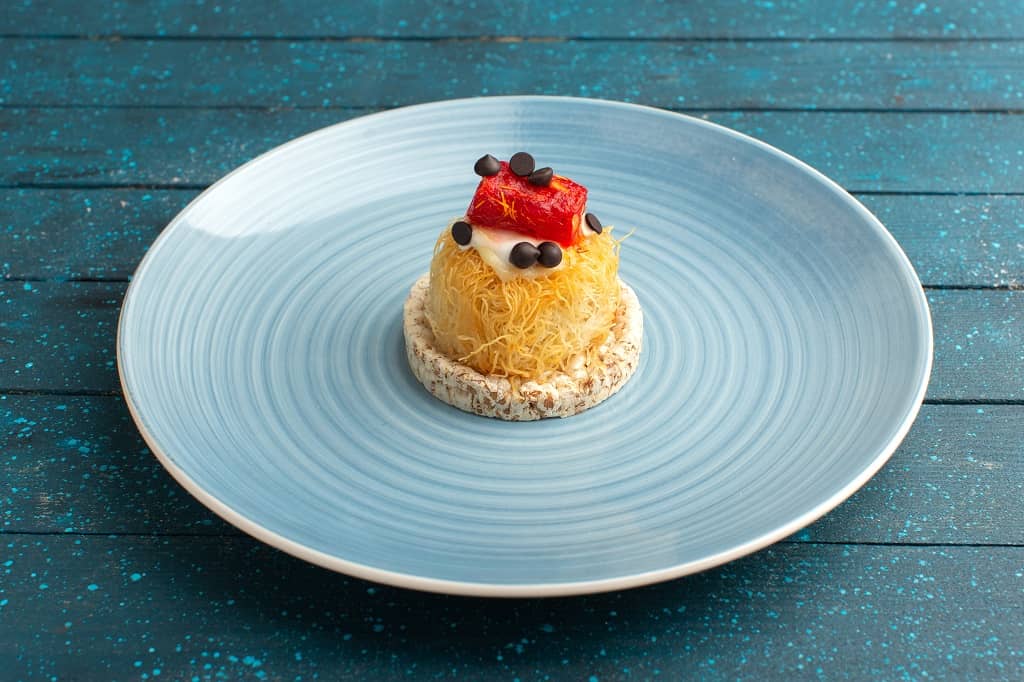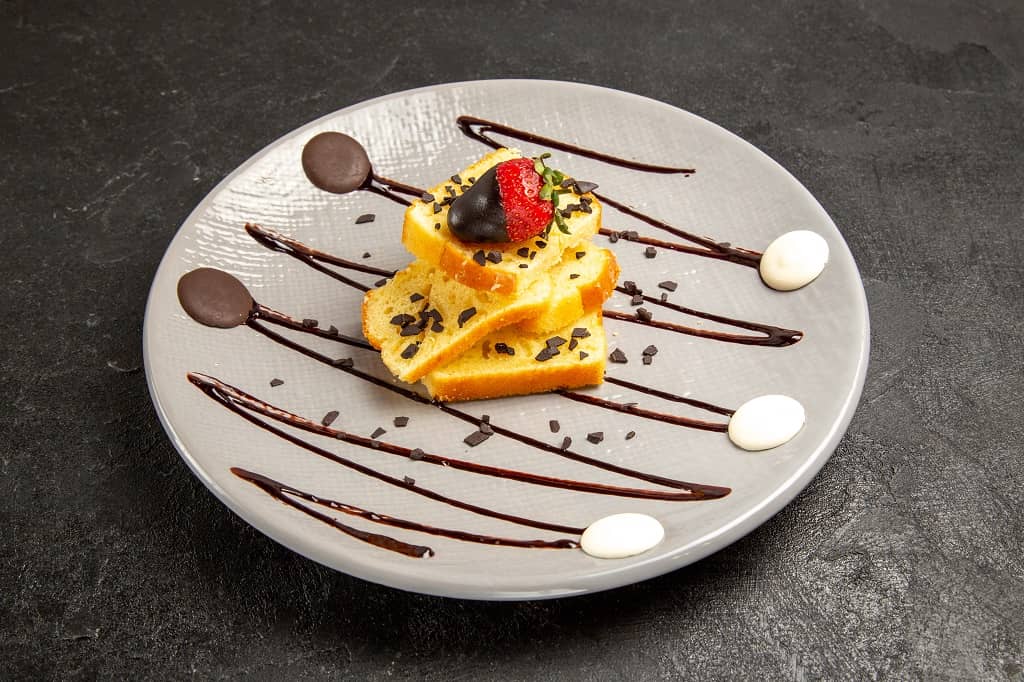Every dinnerware set must include dessert plates, which are frequently used to serve desserts, small portions of food, and appetizers.
However selecting the proper size for your dessert plates can be difficult, particularly if you are not familiar with the range of sizes that are offered on the market.
Let’s get started! In this article, we’ll talk about dessert plate sizes and everything else you need to know about them.
What Are Dessert Plates?

Dessert plates are smaller plates used for serving desserts, appetizers, and small portions of food. They are often part of a dinnerware set and come in various sizes, shapes, and designs.
Dessert plates are usually placed on the table after the main course, and they provide a perfect way to showcase your dessert creations or serve small portions of food.
What Sizes Are Dessert Plates Available In?
Dessert plates come in different sizes, and the size you choose will depend on your personal preference, the occasion, and the type of dessert or food you will be serving.
The standard size for a dessert plate is usually between 7 and 9 inches in diameter. However, there are other sizes available in the market, ranging from 5 inches to 10 inches or more.
Standard Sizes for Dessert Plates
- 7 inches: This is the most common size for dessert plates and is suitable for serving small portions of desserts or appetizers.
- 8 inches: Slightly larger than the 7-inch size, this plate is perfect for serving slightly larger portions of desserts or appetizers.
- 9 inches: This size is suitable for serving larger portions of desserts or appetizers, and it can also be used as a small dinner plate.
Tips for Choosing the Right Size for Your Dessert Plates
Choosing the right size for your dessert plates can depend on a variety of factors, such as the type of dessert you are serving, the occasion, and personal preference.
Here are some tips to help you choose the right size for your dessert plates:
Consider the type of dessert
Some desserts, such as cakes and pies, may require larger plates to accommodate a slice, while smaller desserts like macarons or truffles may be better suited for smaller plates.
Think about portion size
If you plan on serving generous portions of dessert, larger plates may be more appropriate, while smaller portions can be served on smaller plates.
Consider the occasion
Formal occasions may call for more elegant and sophisticated plates, while casual events may allow for more fun and playful designs.
Match the plates to your dinnerware
If you have a set of dinner plates, consider choosing dessert plates that match in style and design.
Take personal preference into account
Ultimately, the size of your dessert plates should be based on your personal preference and style. Choose plates that make you happy and reflect your individual taste.
In general, dessert plates range in size from 6 to 9 inches in diameter. A good middle ground is a plate that is 7 to 8 inches in diameter, which can accommodate a variety of desserts while still being a manageable size.
How to Properly Use and Care for Dessert Plates

Properly using and caring for your dessert plates can help ensure their longevity and maintain their appearance. Here are some tips to help you use and care for your dessert plates:
Use appropriate utensils
When serving dessert, use utensils that won’t scratch or damage the surface of your plates. Avoid using metal utensils or knives on delicate or decorated plates.
Avoid extreme temperatures
Dessert plates can crack or break when exposed to extreme temperatures. Avoid placing hot plates in cold water or exposing them to sudden temperature changes. Similarly, avoid placing cold plates in a hot oven or microwave.
Hand wash your plates
Most dessert plates are not dishwasher safe and should be hand washed. Use gentle dish soap and warm water to clean your plates. Avoid using abrasive sponges or scouring pads that can scratch the surface of your plates.
Dry plates carefully
After washing, use a soft, lint-free towel to dry your plates. Avoid air-drying your plates as water spots may form.
Store plates safely
Store your dessert plates in a safe and secure place, preferably in a cabinet or on a shelf that is not too high. Avoid stacking heavy items on top of your plates, as this can cause them to crack or break.
Handle plates with care
When handling your dessert plates, be careful not to drop or knock them against hard surfaces. Always hold your plates with two hands to prevent accidents.
By following these tips, you can help ensure that your dessert plates remain in good condition for years to come.
Conclusion
Dessert plates are smaller plates used for serving desserts, appetizers, and small portions of food. They are often part of a dinnerware set and come in various sizes, shapes, and designs.
Dessert plates are usually placed on the table after the main course, and they provide a perfect way to showcase your dessert creations or serve small portions of food.
Frequently Asked Questions (FAQs)
Are salad and dessert plates the same size?
Salad and dessert plates are usually not the same size. Salad plates are slightly larger than dessert plates.
Salad plates typically range from 7.5 to 8.5 inches in diameter, providing enough space for a generous serving of salad without overcrowding the plate.
On the other hand, dessert plates are designed to hold smaller portions, ensuring that the sweet treat becomes the focal point.
How small are dessert plates?
Dessert plates are intentionally smaller to encourage moderation in serving sweets.
These plates typically have a diameter ranging from 6 to 7 inches, creating a visually appealing presentation for desserts while controlling portion sizes.
The smaller size also complements the typically rich and flavorful nature of desserts.
What does a dessert plate look like?
A dessert plate is often charming and aesthetically pleasing. It can come in various designs and materials, ranging from classic ceramic to more decorative options.
The smaller size allows for creative presentation, making desserts look visually appealing. Dessert plates may feature patterns, vibrant colors, or elegant simplicity, enhancing the overall dining experience.
RELATED POST:
- What Country Has Dessert Before Dinner
- What Type of Dessert Have Gluten
- Why You Should Eat Dessert Before Dinner? 21 Reasons
